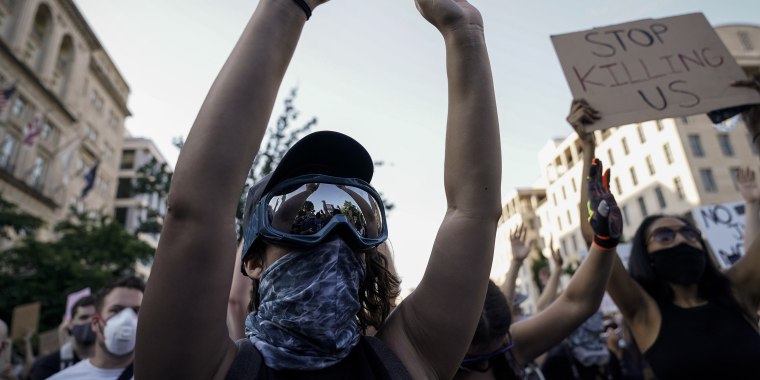As protests and demonstrations continue around the country (and world) in response to the death of George Floyd, many have questions about what they should do to safely participate.
Some people are reporting being met with force as they protest. Many are concerned that the large numbers of people participating in protests might lead to an increase in COVID-19 cases.
The list below, gathered using expert guidance, outlines what to wear, what to know and what to do at a protest to stay safe.
What to wear to be safe at a protest
Amnesty International has compiled a thorough list of what to wear, bring, and know for a protest. A graphic showing the information has gone viral in the past week as more people attend demonstrations.
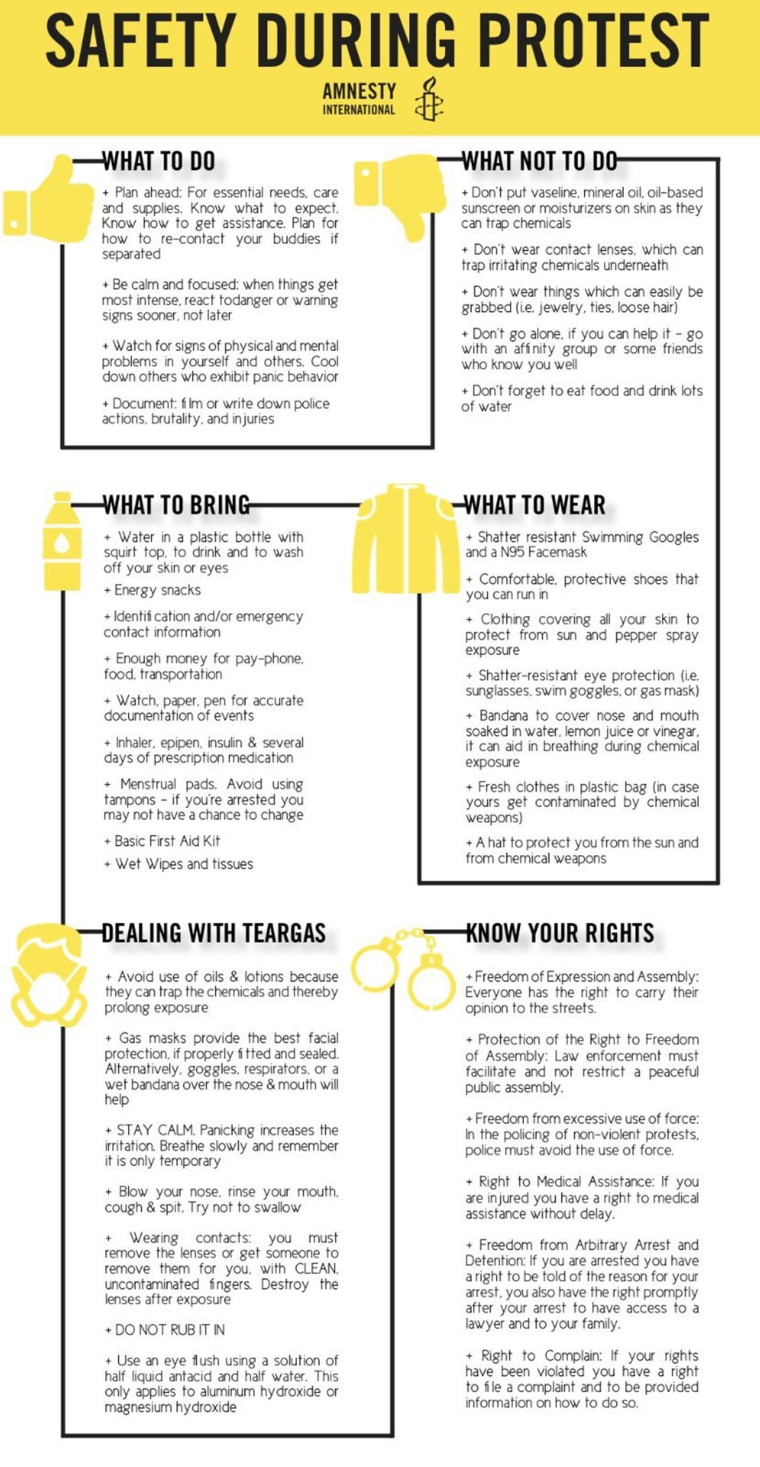
When getting ready to go, make sure you have essential supplies such as water, energy-boosting snacks and enough funds for any needs that might arise. Amnesty International also recommends bringing identification and emergency contact information, a watch, paper and a pen to document events, any prescription medication you may need and sanitary products like menstrual pads.
"Avoid using tampons," says the organization. "If you're arrested, you may not have a chance to change."
The site advises against bringing things that can be easily grabbed or lost, such as jewelry, ties or loose hair. To avoid being strongly affected by tear gas and other chemicals, avoid wearing Vaseline, mineral oil or oil-based sunscreens and moisturizers on skin since they can trap chemicals. Contact lenses can also trap irritating chemicals underneath.
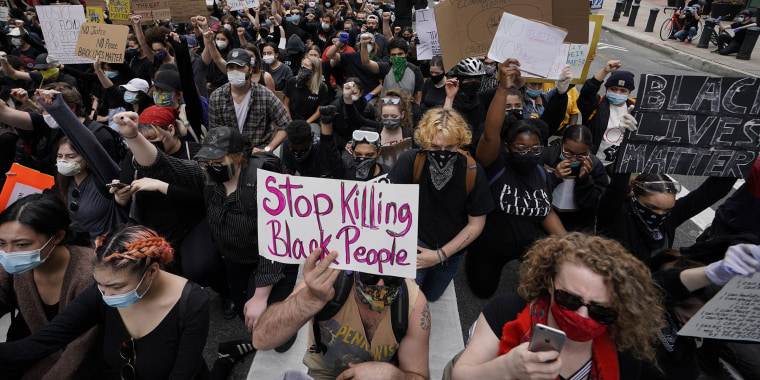
Amnesty International recommends wearing shatter-resistant swimming goggles and an N95 face mask, if available, to protect yourself. If an N95 face mask isn't available, wear a bandana or other cloth mask to cover your mouth. Wear comfortable and protective, closed-toe shoes that you can easily move in, and wear clothes that protect all of your skin to protect from sun and pepper spray. If you can, bring fresh clothes in a plastic bag in case yours are contaminated by chemical agents.
How to slow the spread of COVID-19 while protesting
Peter Pitts, current president of the Center for Medicine in the Public Interest, spoke to TMRW about what to do to slow the spread of COVID-19 while protesting. There have been some concerns that protests may be "super-spreader" events and that the large groups demonstrating might lead to a spike in diagnosed coronavirus cases. While it helps that most of the protests have been taking place outside, Pitts said that the large number of people gathering in one area could lead to increased spread of the virus.
"Having a social conscience doesn't mean ignoring social distancing and other measures to stop COVID-19," Pitts said. "People's emotions are running high and their cause is just, but we can't forget that we are also in the middle of a pandemic."
Pitts noted that since people of color are likely to be disproportionally affected by COVID-19, it's important that protestors take measures to keep themselves and their families safe.
All protestors should wear masks to reduce their chances of spreading and being exposed to the virus, as well as to protect against chemicals. Pitts also recommends wearing gloves and hand sanitizer, and social distancing as much as possible.
It's also important to get tested and quarantine as much as possible.
"When you go outside and you mix with lots of people, the chances for infection and spread of the disease are very high," Pitts said. "This is not a risk-free proposition, and if one does choose to go out, be smart, get tested afterward."
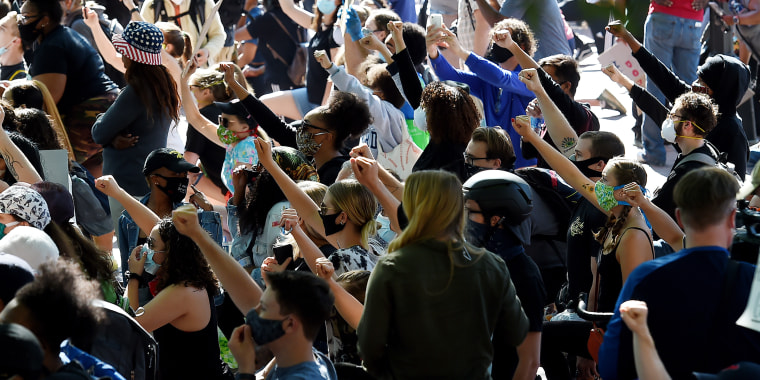
How to safely handle tear gas
Multiple protestors have reported being targeted by tear gas, even during peaceful demonstrations.
To preemptively limit your potential exposure, avoid using oils and lotions on your skin because they can trap chemicals and prolong exposure. As noted above, contacts can also trap the chemicals in the eye, so avoid wearing them if possible.
The Committee to Protect Journalists (CPJ), a group that aims to protect the rights and freedoms of reporters around the world, notes that "Individuals with asthma or respiratory issues should avoid areas where tear gas is being used" since those people can suffer from more severe effects.
Before joining a protest, the CPJ recommends taking note of the surrounding landmarks so you can navigate the area if you are struggling to see.
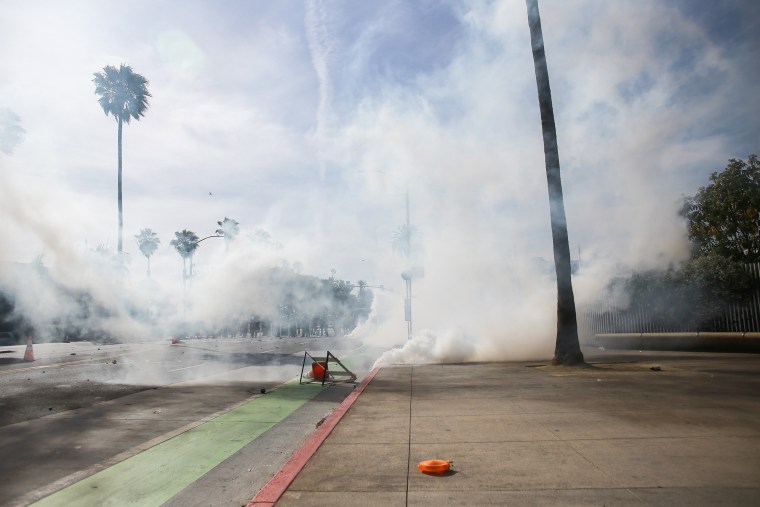
If you are sprayed with tear gas, Amnesty International highlights the need to stay calm.
"Panicking increases the irritation," said the site. "Breathe slowly and remember it is only temporary. Blow your nose, rinse your mouth, cough and spit, (and) try not to swallow. ... DO NOT RUB IT IN."
If tear gas does get in your eyes, the organization recommends doing an eye flush using a solution of half liquid antacid and half water. Some homemade tear gas remedies have been published and shared online, but can do more harm.
If you are wearing contacts and are sprayed with tear gas, remove the lenses immediately or get someone to remove them for you if your hands are contaminated. If someone is helping, make sure they have clean, uncontaminated fingers. Destroy or dispose of the lenses once they are removed.
To help minimize the effects of exposure, the CPJ recommends finding higher ground and standing in fresh air, preferably with a breeze, which can help carry away the gas. Shower in cold water as soon as possible to wash the gas from your skin, and wash clothing several times to make sure it is clear of the chemical.
What to know while at a protest
Both Amnesty International and the CPJ have shared advice on what people should know about attending protests and avoiding aggression.
"Be calm and focused," says Amnesty International. "When things get most intense, react to danger or warning signs sooner, not later."
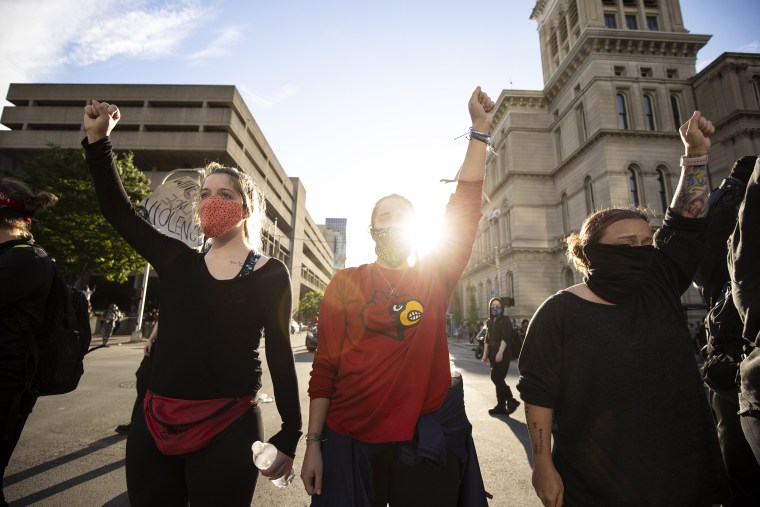
Be sure to go in a group, if you can, and try to keep everyone in your group calm. Amnesty International recommends watching for signs of physical or mental distress and avoiding "panic behavior."
The CPJ recommends making sure you know the area you are going to, to avoid any confusion, and make sure that at least one person not at the protest knows where you are. Check in with that person regularly, and have a plan for what to do in case you are arrested or harmed.
